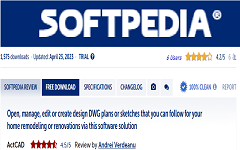How TO OVERRIDE DIMENSIONS

A dimension style override is a change made to specific settings in the current dimension style. It is equivalent to changing a dimensioning system variable without changing the current dimension style. You can define dimension style overrides for individual dimensions, or for the current dimension style
open the Override Current Dimension Style to make override changes to the current dimension style. The current dimension style must be selected in the list before you can click Override. The dimension style definition itself is not modified, only the settings applied to new dimensions.
Dimension styles are settings that you have defined and saved. When you create dimension styles, you can control the layout and appearance of any dimension.
Lines tab
Displays the Dimension Styles dialog box so you can create and modify dimension styles. Dimension styles contain settings that you have defined and saved. When you create dimension styles, you can control the layout and appearance of any dimension.

DIALOG BOX OPTIONS
Color (Dimension Lines) Select the dimension line color.
Linetype (Dimension Lines) Select the dimension linetype.
Lineweight (Dimension Lines) Select the dimension lineweight.
Extend Beyond Tick Marks (Dimension Lines) Type or select the distance that dimension lines extend beyond tick marks.
Baseline Spacing (Dimension Lines) Type or select the baseline offset distance (the distance to offset successive dimension lines when creating baseline dimensions) and the offset from origin (the distance extension lines are offset from their origin points).
Suppress (Dimension Lines) Select to prevent the creation of the first or second dimension line.
Color (Extension Lines) Select the extension line color.
Linetype Extension Line 1 Select the first extension line linetype.
Linetype Extension Line Select the second extension line linetype.
Lineweight (Extension Lines) Select the extension lineweight.
Suppress (Extension Lines) Click to prevent the creation of the first or second extension line.
Origin Type or select the distance to offset extension lines from their origin.
Dimension Line Type or select the distance to offset extension lines from dimension lines.
Fixed Length Extension Lines Click to set the length of extension lines to always be a set length, then type or select the extension line length.
Symbols and Arrows tab

Use this tab to control the appearance and size of arrowheads or tick marks placed at the ends of dimension lines.
Blocks defined in the drawing display in the three Arrowhead lists. You can use these blocks to create and assign your own arrowheads
Allow Separate Arrrowhead Types Select to enable the ability to use different starting and ending arrowheads.
Starting Arrowhead Click to select a Start arrowhead, or click the arrowhead picture to scroll the list automatically.
Ending Arrowhead Click to select an End arrowhead, or click the arrowhead picture to scroll the list automatically.
Leader Arrowhead Click to select Leader type, or click the arrowhead picture to scroll the list automatically
Arrow Size Type or select arrowhead size.
Enable Tick Marks Select to enable tick marks instead of arrowheads.
Tick Mark Size Type or select tick mark size.
Break Size Type or select the size of the break gap.
Center Mark Symbol Select the symbol for center markers that are created with the Dimension Center Point command. Center markers are also drawn by the Dimension Diameter and Dimension Radius commands when dimension lines are placed outside the measured circle or arc.
Center Mark Size Type or select the center marker size. Positive values create a center marker. Negative values create both center markers and center lines. (This setting corresponds to the DIMCEN system variable.)
Symbol Position Select where to position arc symbols for arc dimensions.
Jog Angle Type or select the angle for the jog of radius dimensions.
Jog Height Factor Type or select the scale factor for the jog height of linear dimensions.
Text tab

Use this tab to control the settings affecting the appearance of dimension text.
Text Style Click to select the text style used for dimension text. Click [...] to manage text styles in Text Styles Manager.
Text Color Select the dimension text color.
Text Background Select none, drawing color, or user color for the dimension text background color.
Background Color Select the color for dimension text backgrounds (available if User Color is selected for Text Background).
Text Height Type or select the text height, measured in drawing units.
Vertical Click to select the vertical justification of dimension text.
Vertical Text Offset Type or select the vertical text offset distance.
Horizontal Click to select the horizontal justification of dimension text.
View Direction Select the view direction of dimension text.
Orientation When Text Outside Extension Lines Select the aligment of text when dimension text is outside extension lines.
Orientation When Text Inside Extension Lines Select the aligment of text when dimension text is inside extension lines.
Draw Frame Around Text Click to include a frame around dimension text.
Distance Around Text Type or select the distance around the dimension text.
Fit tab

Use this tab to control the way dimension text and arrowheads are placed in relation to the dimension lines.
Fit Either Text or Arrowheads Inside (Best Fit) Click to automatically determine the best fit method.
Fit Text Inside, Arrows Outside Click to place text only between extension lines and arrowheads outside extension lines when both do not fit between them.
Fit Text Outside, Arrowheads Inside Click to place text outside extension lines and arrowheads inside extension lines when both do not fit between them.
Both Text and Arrows Outside Click to place both text and arrowheads inside the extension lines when both do not automatically fit between them.
Force Text Always Inside Extension Lines Select to always place text inside extension lines.
Suppress arrows if they don't fit inside extension lines Select to prevent the creation of arrows if they don’t fit inside extension lines.
Draw dimension line between extension lines when arrows outside Select to draw dimension lines between extension lines when text and arrows are placed outside extension lines.
Beside the dimension line Click to place text beside the dimension line with a leader when both text and arrowheads do not fit between the extension lines.
Over the dimension line, with leader Click to place text above the dimension line with a leader connecting the text to the dimension line when both text and arrowheads do not fit between the extension lines.
Over the dimension line, without leader Click to place text above the dimension line without a leader when both text and arrowheads do not fit between the extension lines.
Place text manually, ignoring justification Select to be prompted for text placement when creating dimensions.
Annotative Select to make the dimension support annotative scaling by default.
Scale Select to scale the dimension according to the layout or enter a specific scale to apply to all dimension style settings (available only if Annotative is not selected.)
Primary Units tab

Use this tab to determine the appearance and format of the primary and alternate dimension units.
Linear Dimension Unit Format Click to select the format for linear dimensions.
Linear Dimension Precision Type or select the number of decimal places you want displayed for text of linear dimension text.
Fraction Format Select the format for text fractions of linear dimension.
Decimal Separator Select the marker symbol used to separate decimals.
Round Off Type or select the nearest value to which you want to round off linear distances.
Prefix Type a prefix to be appended to linear dimension text.
Suffix Type a suffix to be appended to linear dimension text.
Zero Suppression Leading Select to prevent the inclusion of leading zeros or the inclusion of feet in dimension text when the dimension is less than one foot.
Zero Suppression Trailing Select to prevent the inclusion of trailing zeros or the inclusion of inches in dimension text when the number of inches is zero.
Feet-and-Inches Select to prevent the inclusion of inches or feet in dimension text when the corresponding number of inches or feet is zero.
Angular Dimension Unit Format Select the format for angular dimensions.
Angular Dimension Precision Type or select the number of decimal places you want displayed in angular dimension text.
Angular Dimension Leading Select to exclude any leading zeros for angular dimension text.
Angular Dimension Trailing Select to exclude any trailing zeros for angular dimension text.
Comprehensive Scale Factor Type or select the scale factor applied to all dimensions.
Linear Dimensioning Scale Factor Type or select the linear scale factor applied to all lengths measured by dimensioning commands.
Alternate Units tab

Use this tab to include and format alternate dimensions.
Display Alternate Units Select to include alternate units with dimension text.
Alternate Units Format Click to select the format for alternate dimension text.
Alternate Units Precision Type or select the number of decimal places you want displayed for alternate dimension text.
Multiplier for Alt Units Type or select the scale factor applied to measured dimensions to generate the alternate dimension text.
Round Distances To Type or select any rounding for alternate dimension text.
Prefix Type a prefix to be appended to alternate dimension text.
Suffix Type a suffix to be appended to alternate dimension text.
Placement Select the placement of alternate dimension text.
Zero Suppression Leading Select to prevent the inclusion of leading zeros for alternate dimension text.
Zero Suppression Trailing Select to prevent the inclusion of trailing zeros for alternate dimension text.
Feet-and-Inches Select to prevent the inclusion of inches or feet in alternate dimension text when the corresponding number of inches or feet is zero.
Alternate Tolerance Precision Type or select the number of decimal places displayed in limits or tolerances included as part of alternate dimensions.
Suppress Leading Zeros Select to prevent the inclusion of leading zeros as part of alternate dimensions.
Suppress Trailing Zeros Select to prevent the inclusion of trailing zeros included as part of alternate dimensions.
Feet-and-Inches Select to prevent the inclusion of inches or feet in alternate dimension text when the corresponding number of inches or feet is zero.
Tolerances tab

Use this tab to control tolerance dimensions, including the upper and lower tolerance limits as well as the number of decimal places of the dimension text.
Tolerance Select to include plus and minus tolerance values with the dimension text.
Limits Select to insert dimensions as upper and lower tolerance limits.
Precision Type or select the number of decimal places displayed in limits or tolerance dimensions.
Lower Tolerance Limit Type or select the minimum tolerance or lower limit value.
Upper Tolerance Limit Type or select the maximum tolerance or upper limit value.
Scaling for Height Type or select the scale factor applied to the height of limits or tolerance dimension text.
Vertical Position Select the vertical justification of limits or tolerance dimension text.
Zero Suppression Leading Select to prevent the inclusion of leading zeros in limits or tolerance dimension text.
Zero Suppression Trailing Select to prevent the inclusion of trailing zeros in limits or tolerance dimension text.
Feet-and-Inches Select to prevent the inclusion of inches or feet in limits or tolerance dimension text when the corresponding number of inches or feet is zero.
The dialog box has two options common to all tabs:
Reset Page Values to Default Select to change the dimension variables on the current tab to their default state. The program does not warn you that your changes will be lost.
Reset All Values to Default Select to change all dimension variables to their default state. The program does not warn you that your changes will be lost.
Refer the below video to see how to override dimensions








